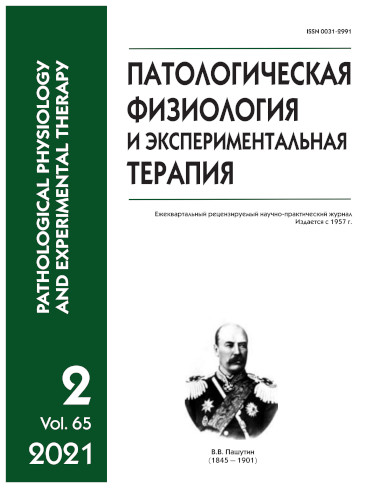Morphological aspects of the protective effect of newly formulated rectal suppositories with turmeric extract in experimental Crohn’s disease
Abstract
The development of safe, new, pathogenetically justified medicines, mainly with local effects and of endogenous or plant origin, is of great interest for treatment of Crohn’s disease (CD). In this regard, an extract of rhizomes of Curcuma longa, containing a curcuminoid complex with pleiotropic effects, has attracted attention. We showed previously that having turmeric extract in suppositories for treatment of experimental CD would produce immunomodulatory and antioxidant effects. This suggests that turmeric extract affects the morphology of the CD intestinal lesion. The aim of this work was to study the effect of turmeric extract in the composition of novel rectal suppositories on the morphology and expression of myeloperoxidase (MPO) and TNF- α in colon lesions of experimental CD. Methods. Experiments were performed on 49 sexually mature male Wistar rats. CD was modeled by administration per rectum of an alcohol solution of trinitrobenzenesulfonic acid. The newly formulated rectal suppositories weighing 300 mg and based on polyethylene glycols of various molecular weights and containing 0.075 mg of curcumin obtained from Curcuma longa L. rhizome extract were administered per rectum every 12 hours for 7 days. The clinical status was assessed with the modified disease activity index (DAI) scale. The ulcer defect diameter, cell infiltration, tissue damage index (TDI), MPO expression, and TNF-α expression were evaluated. Results. In experimental CD on the 3rd, 5th, and 7th days of observation, a morphometric assessment of the lesion in the large intestine revealed the presence of ulcerative defects, edema, thick neutrophilic lymphocytic infiltration with an admixture of eosinophils, plasmocytes, histiocytes, fibroblasts, the formation of granulation tissue, increased TDI, and increased expression of MPO and TNF-α. The size of ulcerative defects, the degree of wall infiltration by neutrophils, lymphocytes, plasmocytes, histiocytes, and fibroblasts were recorded. The TDI, the expression of MPO, and TNF-α were associated with the DAI. The use of the novel rectal suppositories produced a maximal effect on the 5th and 7th days of observation. The severity of clinical and morphological signs of the disease were reduced. These signs included ulcer size, TDI, intestinal wall infiltration with neutrophils, lymphocytes, eosinophils, plasmocytes, histiocytes, and fibroblasts, and expression of MPO and TNF-α. Conclusion. The results supplement available data on the pathogenesis, the role of the expression of MPO and TNF-α, and the morphology of the lesion in the clinical status in TNBS-induced CD in rats. The demonstrated, protective properties of curcumin in the composition of the novel rectal suppositories at the preclinical stage of CD expand modern understanding of the pleiotropic effects of turmeric extract and are a prerequisite for further research and the introduction of a new dosage form in clinical practice.






